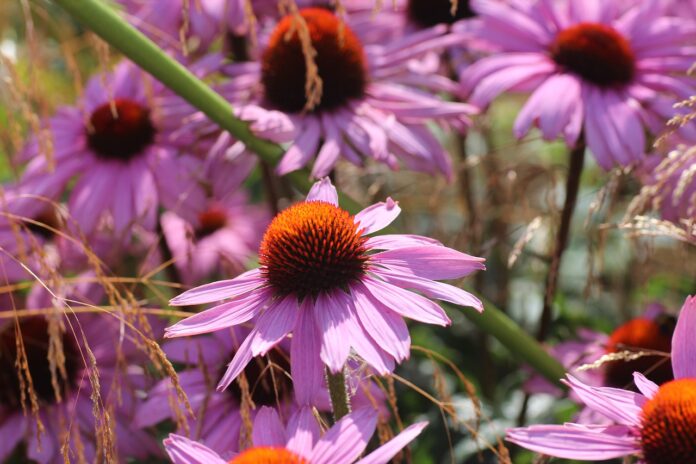Native plants are an excellent option for the home garden because they are uniquely suited to survive in your backyard. They don’t require a ton of maintenance to grow in the preexisting climate or soil conditions, and they’re great for native wildlife and pollinators that rely on them for food, shelter and reproduction.
I recently began researching coneflowers, or echinacea, to plant at the end of my driveway because they are easy to establish.
Coneflowers are perennials in the daisy family that bloom during summer and fall. They are native to the eastern and central regions of the United States. They grow 2-4 feet tall and self-sow year after year if the seedheads are left alone.
There are nine native species of coneflowers in shades of purple and yellow and more hybrid species. However, many hybrids are sterile and lack genetic diversity, so natives are preferred.
Coneflowers provide many resources for songbirds and pollinators. Bees and butterflies rely on them for nectar during their bloom period and in return disperse their pollen and seeds. Songbirds are attracted to them to feed on their seeds in the fall.
Improve the ecosystem in your backyard and learn how to plant native coneflowers in your garden or landscape this spring.
Planting coneflowers
When to plant. Coneflowers can be purchased as small plants with blooms and planted during spring through early summer. Seeds can be started indoors 8-10 weeks before the last frost date and transplanted outside after that time or sown outdoors when soil temperatures have reached 65 F. However, plants that grow from seed are not likely to bloom for two to three years.
Choosing a location. Coneflowers thrive in full sun and well-drained soil. They are tolerant of poor soil conditions but bloom best when soil is nutrient-rich. Make sure the location you select isn’t too shaded and doesn’t hold water.
Planting coneflowers
- Loosen the top 12-15 inches of soil and mix in 2-4 inches of compost.
- Space small plants or transplants 1-3 feet apart, planning spacing based on the expected size of the plant at maturity.
- Each individual plant’s hole should be about twice the size of its root ball.
- Make sure each root ball is level with the soil surface and backfill to the top of the root ball.
- Water each plant thoroughly after it’s been planted.
- Putting a thin layer of compost and a 2-inch layer of mulch around each plant will help hold in moisture and prevent weeds.
- Native varieties will not require fertilizer and only require supplemental watering when the soil remains extremely dry immediately after planting.
Maintaining coneflowers
Cutting your coneflowers back as they come into bloom will delay blooming until the fall. By removing 1 foot of each stem, you’ll achieve later flowering and more compact growth. You may also choose to only cut back some stems to achieve staggered height and bloom times.
When your flowers are done blooming, you can remove the dead blooms to prolong the blooming season. Deadheading also prevents coneflowers from self-sowing if you don’t want them to continue spreading.
It’s most beneficial to wildlife to leave late seed heads on your coneflowers. Birds enjoy eating the seeds and promote the self-seeding of the plant.
Coneflowers with late seed heads intact should be cut back during late winter to early spring.










